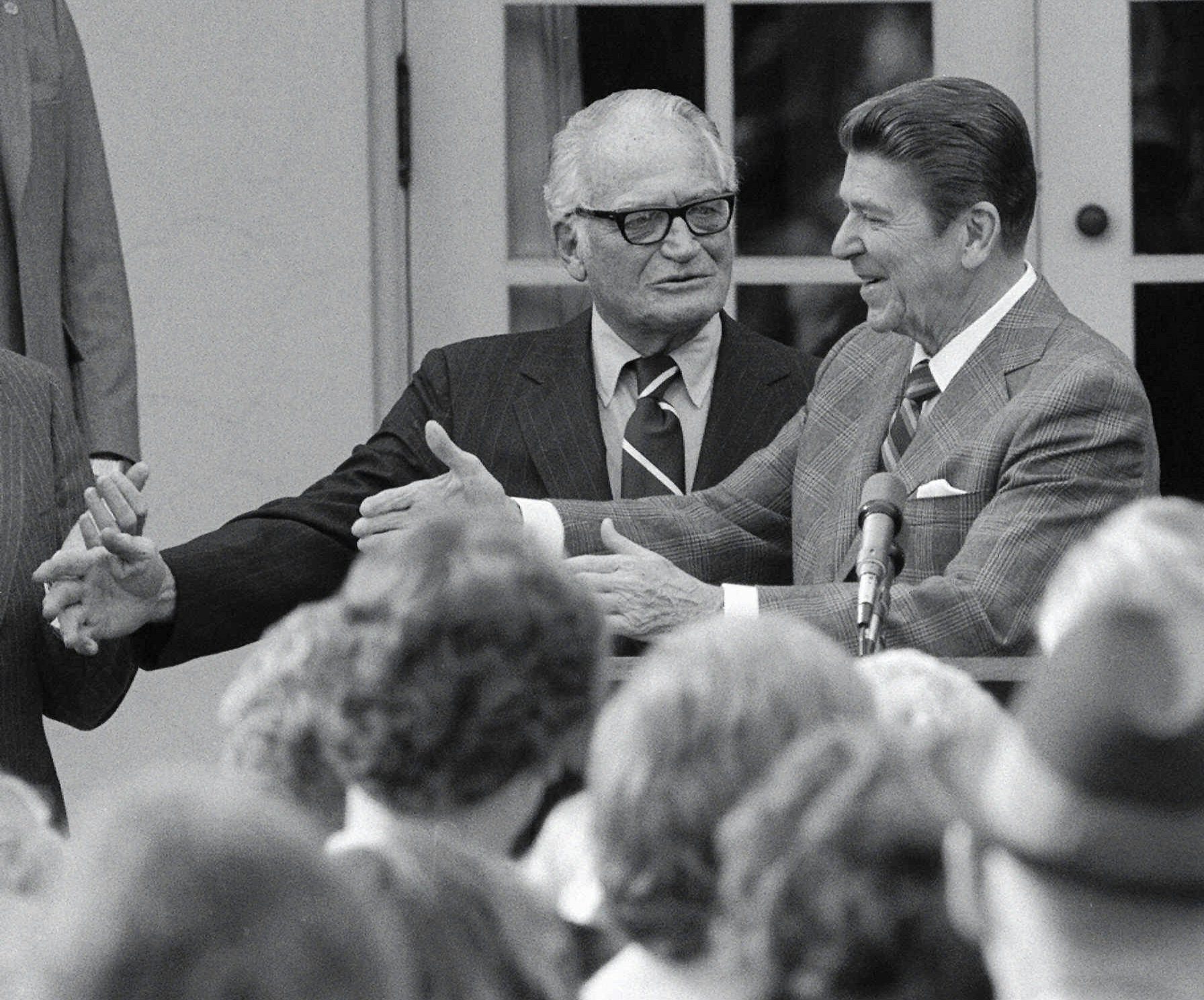An estimated 11,000 books (!) have been written about President Ronald Reagan. Now, we have another one.
Max Boot is senior fellow at the Council on Foreign Relations, and a columnist for the Washington Post. He was at the Texas Tribune Festival here in Austin this month. “The passage of more than 30 years since he left office,” writes Boot, “affords the kind of understanding of his presidency that historians finally achieved only in the 1980s for the Eisenhower administration.” Boot says that while a huge number of books about Reagan exist, none could be described as a “definitive biography, which is what I was trying to achieve.” Even Reagan’s own children have told Boot they learned new things about their father in the book, so perhaps he has succeeded.
From his early days, Reagan didn’t want to get close to anybody – he kept the world at a safe remove. “Stu Spencer, who was his long-time political consultant and one of my best interview subjects for the book, said Reagan would have made a pretty good hermit. Even though he projected this image of warmth, there was a kind of iciness at his core.”
Reagan first burst onto the public stage with a speech he gave on the eve of the 1964 election for the Barry Goldwater campaign. “You and I have a rendezvous with destiny. We’ll preserve for our children this the last hope for man on Earth or we’ll sentence them to take the last step into 1,000 years of darkness.” If one thinks DT delivers doom and gloom speeches, remember that one! Boot said that when you decipher what Reagan meant, “it was a much weirder speech than people realise, because he was talking about programs like Medicare and Medicaid and the Civil Rights Act. He was warning these would lead to the complete loss of freedom in America.” But once he got into government, the reality was very different. “The essential paradox of Ronald Reagan is that he was so far to the right as a campaigner and yet so often a centrist when he was in government.”
Boot said Reagan “was both more ideological and more pragmatic than most people realise. One of my biggest takeaways was the huge disparity between who he was as a campaigner and what he did in government. That’s one of the things that distinguishes him from DT today.”
Reagan, who Boot writes was “a product of 1920s America,” might be difficult to relate to today, a full century later. A major speech on East-West relations was delayed a month, until Jan. 1984, “at the insistence of Nancy Reagan’s astrologer.” And in a hot mic moment on Aug. 11, 1984, Reagan said “My fellow Americans, I’m pleased to tell you today that I’ve signed legislation that will outlaw Russia forever. We begin bombing in five minutes.” Good thing the Russians weren’t listening. With the speed of internet communications today, that could spark a war.
Boot is very level-headed when it comes to Reagan’s hyperbole. In his farewell speech as President, Reagan claimed to have carried out “the first revolution in the history of mankind that truly reversed the course of government.” This, writes Boot, “was a considerable exaggeration.” The so-called Reagan Revolution “always remained more aspiration than reality. Spending under Reagan grew by 25% and the budget deficit by 40%.” Despite all his failures, which Boot takes a full page to list, Reagan left office with an approval rating of 63%, behind only Bill Clinton at 66% for postwar presidents. Even though Goldwater did not achieve the presidency in the 1964 election, he lived long enough to witness the presidency of his supporter all those years ago. “You have done one hell of a good job,” Goldwater wrote to Reagan in November of 1988, just 2 months before Reagan left office.
A very fine book, which does mention General Graham (who I interviewed in 1985) in connexion with the Star Wars program. Gen. Graham does not appear in the Inboden book (see below) as many pages had to be deleted at the direction of the publisher to make the book printable.
For those who want to explore Reagan with a different perspective, read my review of Dr. Inboden’s biography:
Max Boot’s book Reagan (836 pages, incl 63 pages of notes and bibliography) is by Liveright Publishing. It lists for $45.
Photo by: CHARLES TASNADI
President Ronald Reagan, right, greets Sen. Barry Goldwater, R-Ariz., in the Rose Garden at the White House during a ceremony to start National Partiotism Week in Washington, D.C., Tuesday, Feb. 17, 1981. (AP Photo/Charles Tasnadi)
Note: It is the editorial police of this newspaper to refer to the former president as DT. The names of all convicted felons will similarly be reduced to their initials.
